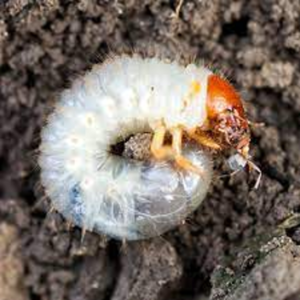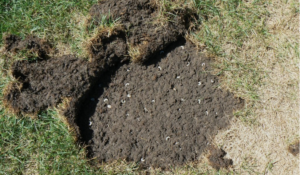Do You Have Grubs?
3 Signs of Lawn Grubs
Some lawn problems are obvious and easily diagnosed. Crabgrass crowding out your healthy grass or other weeds creeping into the lawn is a noticeable frustration. But sometimes a lawn problem is a bit stealthier. It might be happening right under your nose without you even knowing. Lawn grubs are one of these sneaky problems.
Grubs, which is the collective name for several species of beetles in the larval stage, are tiny creatures that have the power to do a lot of damage to your lawn. The biggest trouble with lawn grubs is that they may be munching your grassroots, causing damage beneath the surface, where you won’t easily notice them. That’s why it’s important to pay attention to signs of lawn grubs.
Signs of Lawn Grubs
1. Grass Pulling Up
One of the most tell-tale signs of lawn grubs is when the grass is pulling up. This occurs because lawn grubs eat the roots of your lawn (rather than the grass blades, as surface-feeding insects do). Once they’ve destroyed your lawn’s roots, it can pull up easily. In some worst-case scenarios, the lawn might even be able to “roll up” like a carpet in certain sections where grubs have been feeding.
2. Grass Turning Brown
Another sign of lawn grubs is also the grass turning brown, particularly if it’s happening in certain areas or patches. These could be spots where grubs have been feasting on the lawn’s roots, causing it to die in that area.
Of course, brown spots on the lawn can have other causes as well. Lawns suffering from drought damage, surface insect damage, or lawn diseases can also turn brown. But if the grass is pulling up and turning brown, it’s quite likely it’s related to grub damage.
3. An Increase in Animal Activity
If you notice a sudden increase in animal activity on your lawn such as a large number of birds or moles hanging around, it could be a possible sign of lawn grubs. Lawn grubs are a common food source for many of these animals. In fact, if you start to notice mole damage (such as tunneling or a dug-up lawn), it could be that these pests are in search of lawn grubs.

Best Way to handle Grubs….
Call Cianfrani Lawn Care!!

